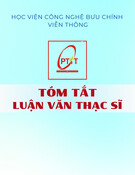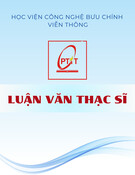
1
HABITSANDTECHNOLOGYFIT:ASTUDYOFTECHNOLOGY
ACCEPTANCE
Athesissubmittedinfulfillmentoftherequirementsforthe
degreeofDoctorofPhilosophy
LuisGerardoSánchezAcenjoCarrillo
(LegallyknowninAustraliaas:LuisSatch)
BachelorofArts(Communication)
MasterofBusinessAdministration

ii
SchoolofManagement
CollegeofBusiness
RMITUniversity
March2014

iii
DECLARATION
Icertifythatexceptwheredueacknowledgementhasbeenmade,theworkisthatofthe
authoralone;andtheworkhasnotbeensubmittedpreviously,inwholeorinpart,toqualify
foranyotheracademicaward;thecontentofthethesisistheresultofworkwhichhasbeen
carriedoutsincetheofficialcommencementdateoftheapprovedresearchprogram;any
editorialworkpaidorunpaid,carriedoutbyathirdpartyisacknowledged;and,ethics,
proceduresandguidelineshavebeenfollowed.
Signature:
LuisGerardoSánchezAcenjoCarrillo
(LegallyknowninAustraliaas:LuisSatch)

iv
ACKNOWLEDGEMENTS
UndertakingaPhDisparadoxicallythemostsolitarystageinanyone’seducation;because
despiteworkingaloneforfouryears,therearenumerouspeopleandorganizations
contributingbefore,duringandaftertheelaborationofathesisinawaythatasingleperson
canconductapieceofresearchandbeawardeddoctoraldegree.
TherelationshipwithsupervisorsisperhapsthemostinfluentiallinkforaPhDstudentduringa
candidature.Therefore,Ishallsay‘thankyou’first:tomysupervisorsProfessorAdela
McMurrayandDr.NuttawuthMuenjohn.Iwillcherisheveryminutespenttogetherastheir
guidancewassoundandwiseatalltimes.Iamgratefulthattheyshowedauthenticsupport,
andbelievedinme.
Iwouldliketorecognizeandthankmywife,Elena,forheractivesupport,loveand
understandingduringthiswonderfuljourneyofbecomingaresearcher.Afterallshewasthe
closestateverystepofthisandmanyotherworthwhilejourneys.Sheshared,enjoyedand
maybeevensufferedsomeoftheunavoidablemilestonesofmystudies...Nodoubtshe
deservesmylove,gratitude,andrecognitiontoagreaterextentthanIcouldpossiblyexpressin
writtenwords.
AlargeamountofthecreditforallIhaveaccomplishedhastobegrantedtomyparents,
AdrianaandGerardo,astheyalwayscared—withallthedeepimplicationsthatcaringbrings.I
wouldalsoliketoacknowledgemysister,Ingrid,because,asasourceofconstantcreativityand
novelty,sheplantedtheseedofthegreatideathatbroughtmetoAustralia.
SpecialacknowledgmentformystudiesshouldbegiventoRMITUniversityandCONACYT
whichprovidedtheacademicstructureandfinancialsupporttoshapemeasaresearcher;The
UniversityofMelbournewasinstrumentalinprovidingasignificantpartofmystatistical
training,andOptimalWorkshopswhichkindlysponsoredmyresearchbyprovidingaccesstoa
cloud‐softwarekeyofmyresearch.
Innumerablefriendsandscholarsdeserveamention,andIamdeeplythankfulforeachof
them.However,Imustmentionafewoftheirnamesastheyintervenedactivelyand/or
providedacrucialcollaborationatsomepointofmydoctoralstudies;withouttheir
contributionIwouldnotbeherecompletingaPhD,oratleastnotnow.Thankyou:Professor
BrianCorbitt,PhD;Dr.CarlosLaBandera,AssociateProfessorDavidGilbert,PhD;Felipe
VelazquezLópez,Dr.JoséGuadalupeSánchezAviña,Dr.PeterChomley,Dr.Siddhi
Pittayachawan.

v
DEDICATION
“Tothosewhoarecommittedtotransformtheworldintoabetterone
bychangingthemselvesfirst…”


























